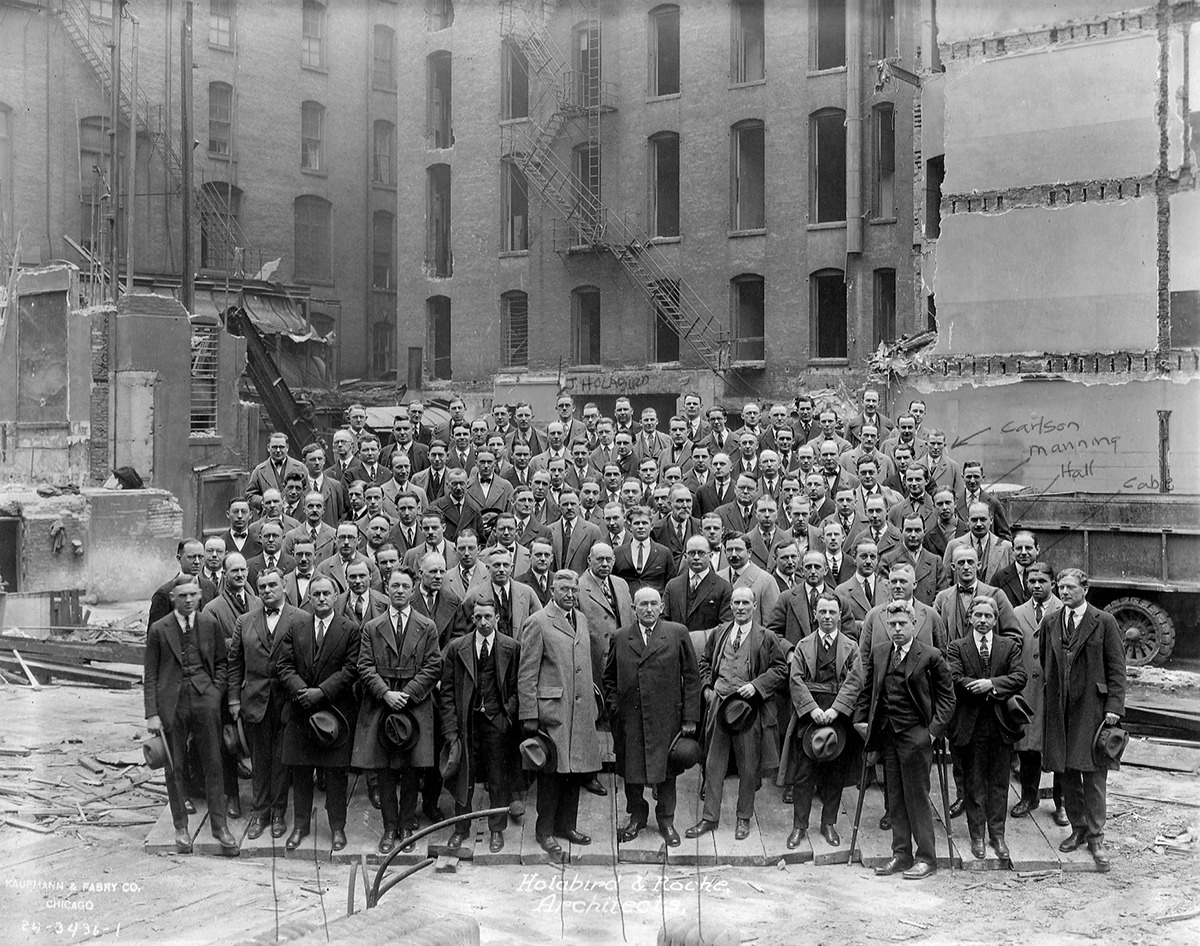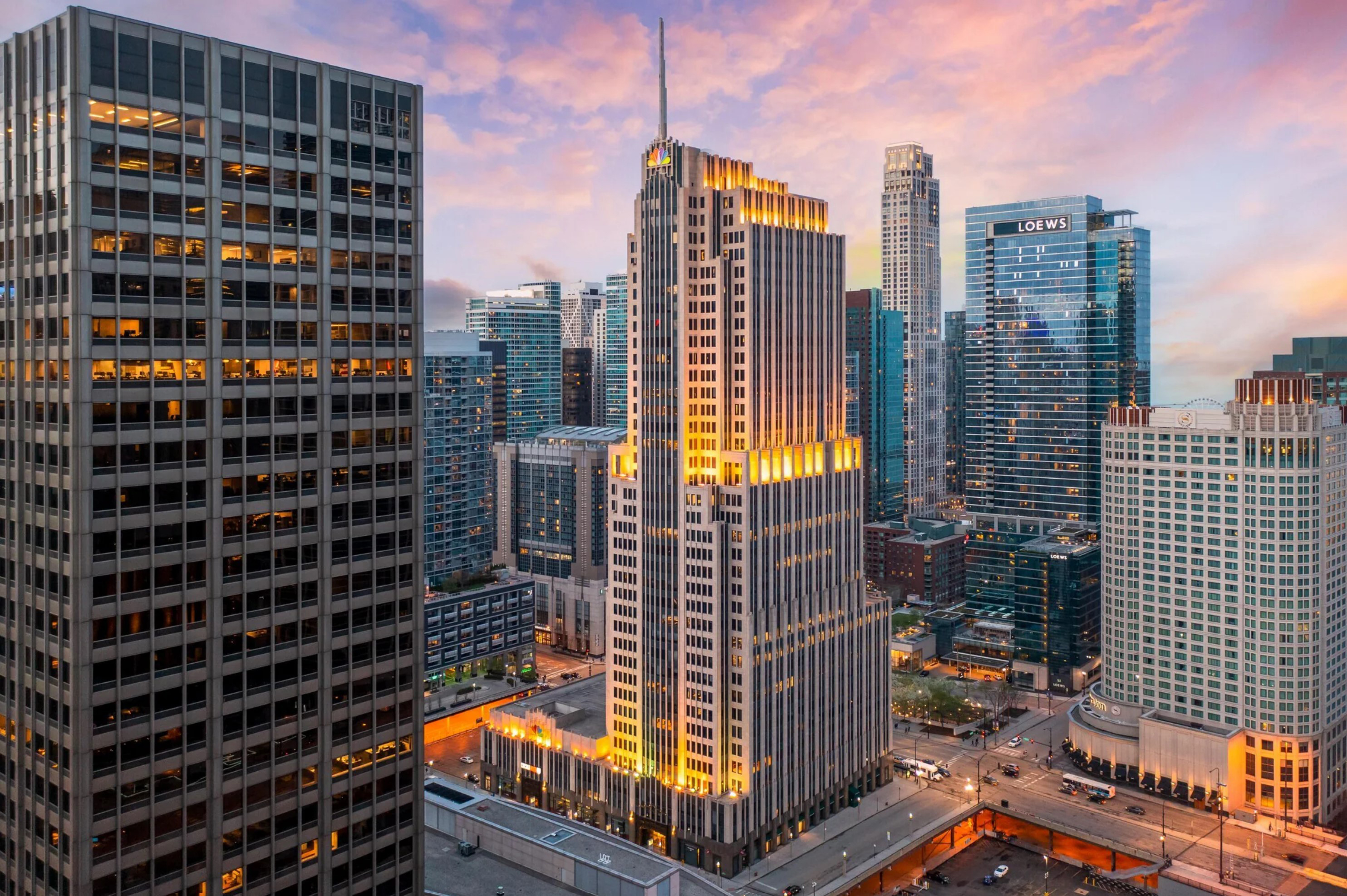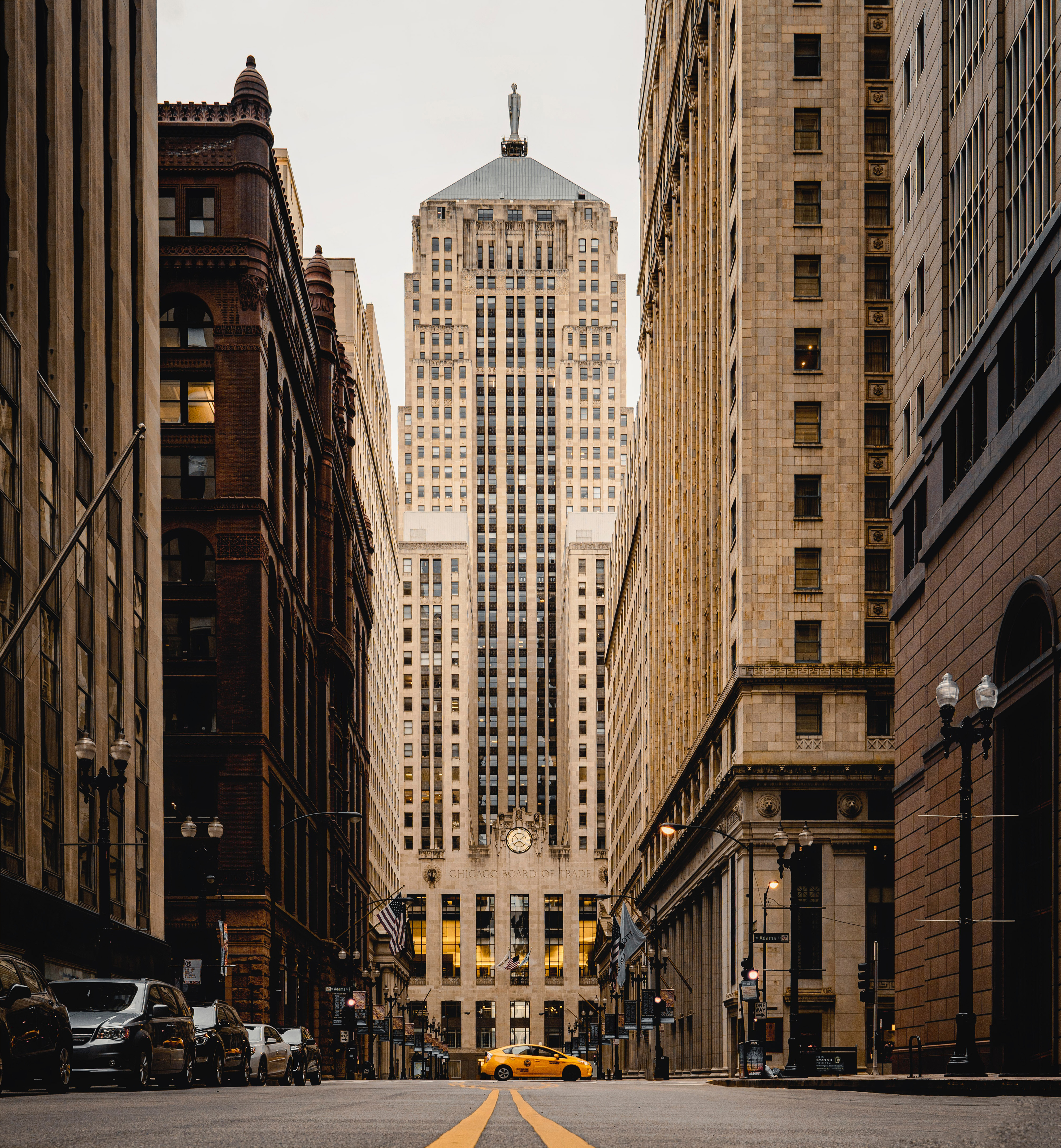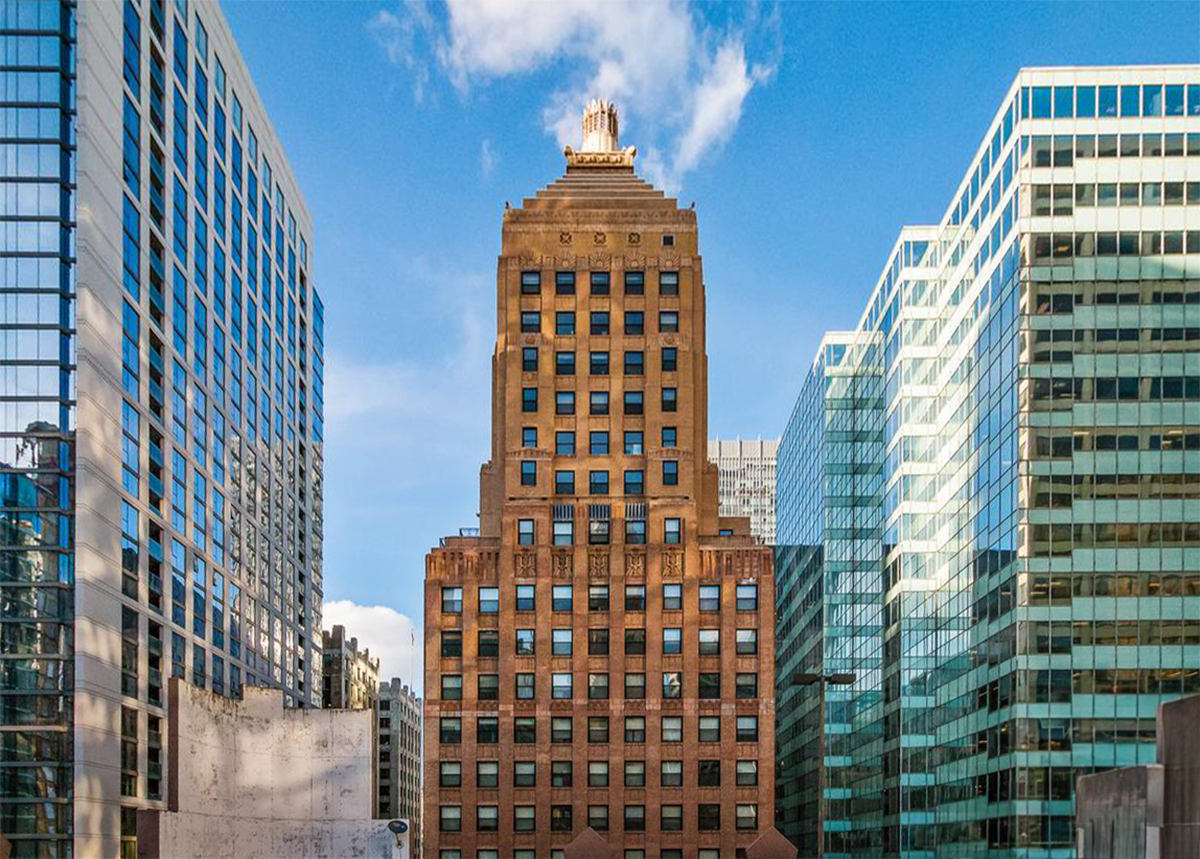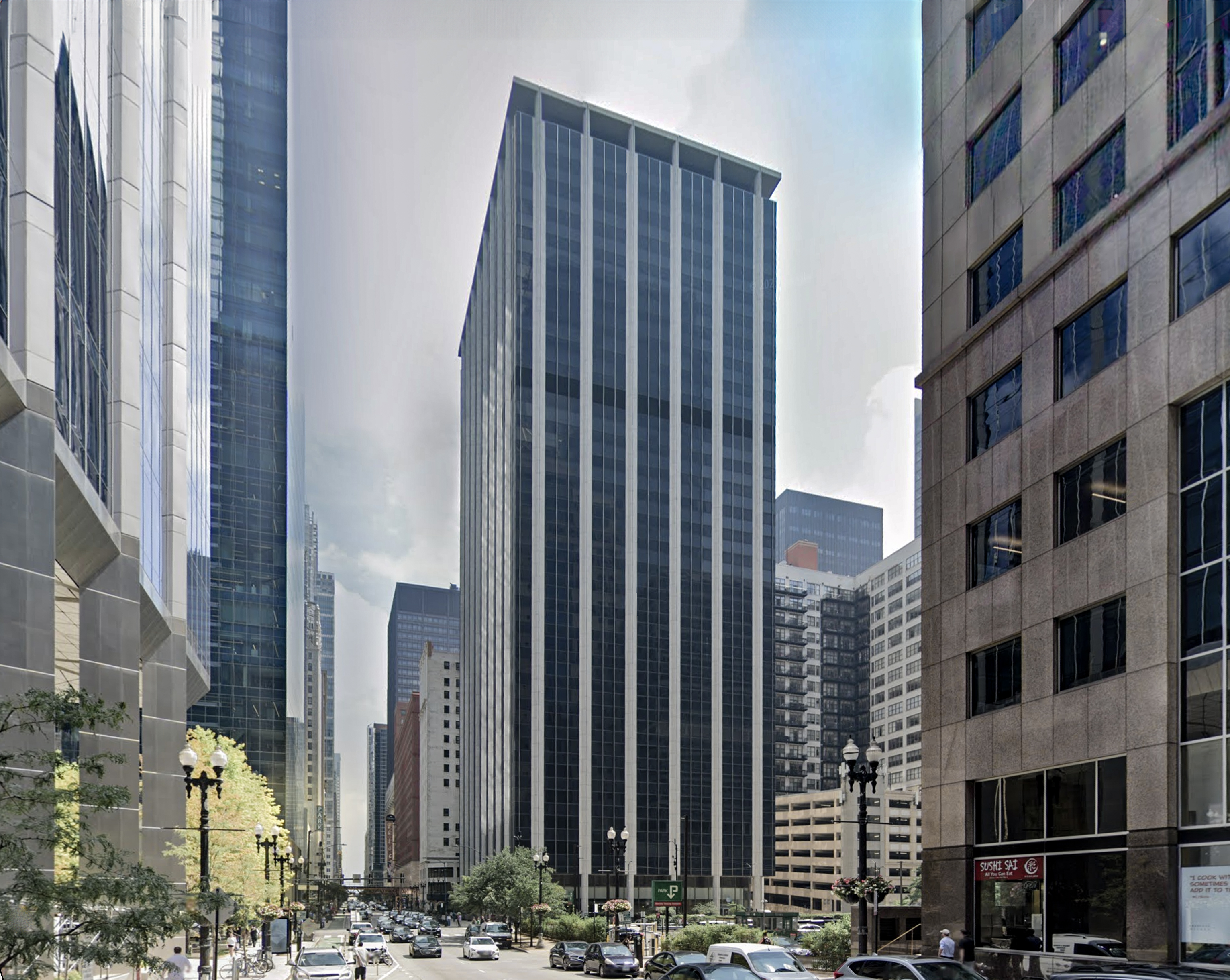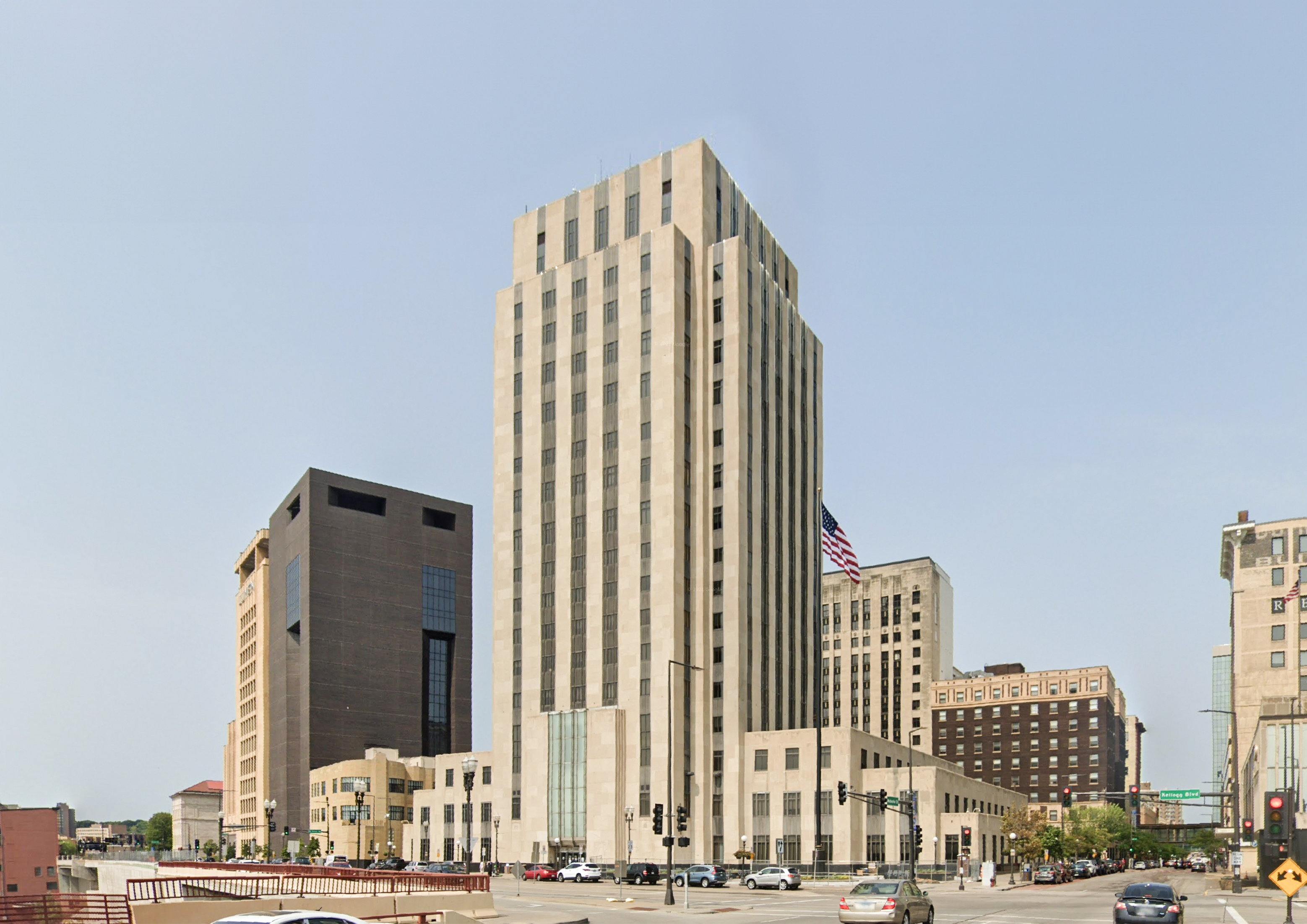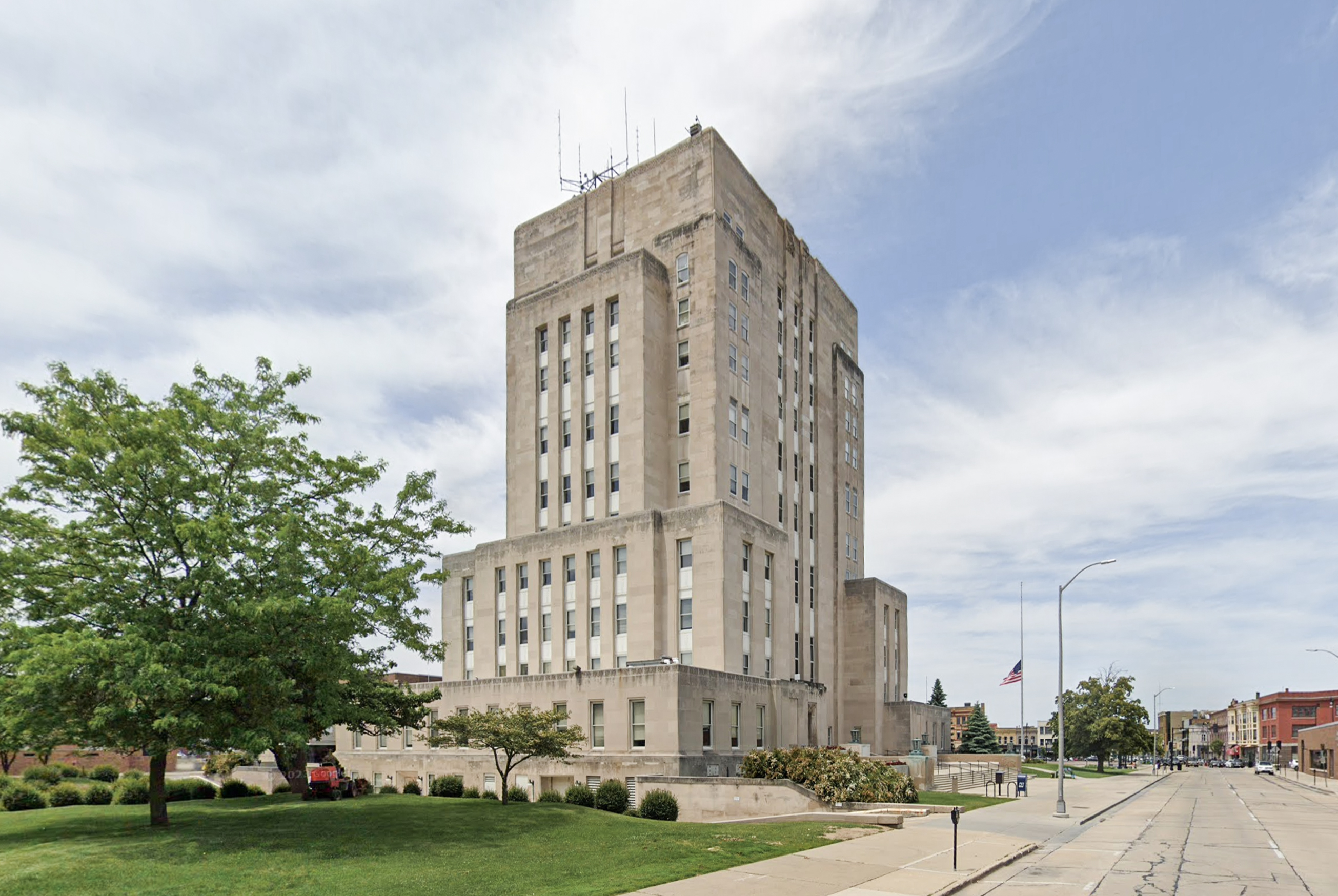The Palmolive Building is an Art-deco skyscraper designed by Holabird & Root, and built between 1927 and 1929 in Chicago, IL.
Palmolive Building is not the only name you might know this building by though. It is common for companies to want to attach their names to iconic buildings when they move in, or for the general public to come up with nicknames, and this one is no exception. The building has changed names several times over the years, and is also known as:
- Playboy Building between 1965 and 1989.
- 919 N. Michigan Building between 1989 and 2001.
Its precise street address is 919 North Michigan Avenue for the commercial spaces, and 159 East Walton Place for the residences, Chicago, IL. You can also find it on the map here.
The Palmolive Building is a structure of significant importance both for the city of Chicago and the United States as a nation. The building embodies the distinctive characteristic features of the time in which it was built and the Art Deco style. Because of that, the Palmolive Building was officially declared as a national landmark on February 16th 2000.
The building underwent a major restoration in 2000.

